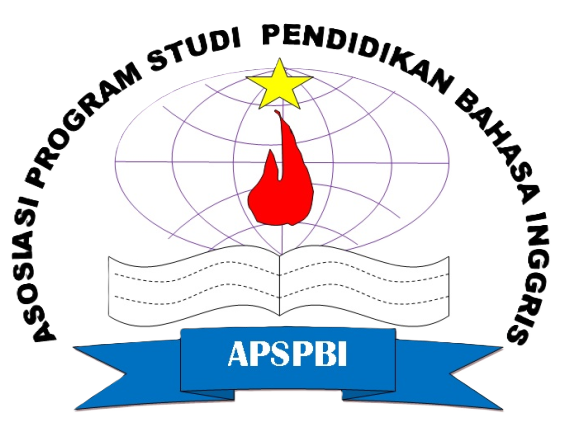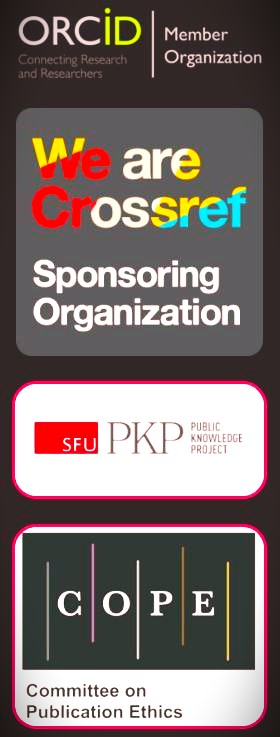ERROR ANALYSIS IN COMPLETING STRUCTURE AND WRITTEN EXPRESSION OF TOEFL TEST
DOI: https://doi.org/10.26618/exposure.v12i2.12848
Error analysis, Structure and Written Expression, TOEFL.
Abstract
The TOEFL test is commonly regarded as one of the requirements for comprehensive test or graduation for the students in an academic. Therefore, it is the obligation of students to fulfill these requirements and must to prepare more intensively to take the TOEFL test. The purpose of this research was to analyze the Structure and Written Expression of TOEFL and to investigate the underlying causes of the errors or mistakes made by the students. The subject was the students of English Department at Almuslim University. The research used mixed method. The researcher used both qualitative and quantitative designs. Data was collected through test and interviews. It can be described that the questions were consisted into three of difficulty category was 55%. While, medium category was 40% and easy category was 5% for students in answering the Structure and Written Expression. In the Structure form indicates the lowest correct answer was 11 and the highest correct answer was 73. The total the correct answer on the structure form was 235, while incorrect answer on the Structure form was 380. Whereas, in the Written Expression form the lowest answer was 45 and the highest correct answer was 92. The total correct answer on Written Expression Form was 29, while the incorrect answer on the Written Expression Form was 740. Based on research finding, it can be concluded that the students encountered similar difficulties when answering the questions in Structure and Written Expression Section of the TOEFL examination.
References
Akmal, Saiful., Risdaneva., Habiburrahim, H., & Sari, M. (2020). The English teachers’ challenges in TOEFL preparation for senior high school students. 10(1), 24–44.
Akmal, S. et al. (2020). EFL learners ’ difficulties in the structure and written expression section of TOEFL test in an Indonesian university. Englisia: Journal of Language, Education, and Humanities, 7(2), 156–180. https://doi.org/10.22373/ej.v7i2.6472
Alek, H. J., Farhan, M., Nurlia, V., & Haucsa, G. M. (2019). University students’ Perception on TOEFL as a graduation requirement: A case in UIN Syarif. In ELITE Journal (Vol. 1, Issue 1). https://www.elitejournal.org/index.php/ELITE
Aniuranti, A., Faiza, D., & Wulandari, Y. (2021). Enhancing students ’ understanding of english grammar through literary works and exploring students ’ voice On their use. Scholaria: Jurnal Pendidikan Dan Kebudayaan, 11(3), 264–270.
As’ari, Chalil, et all. (2020). Pelatihan test of english as a foreign language (TOEFL) bagi pencari kerja alumni program studi pendidikan bahasa indonesia fakultas dan ilmu pendidikan universitas almuslim. 3(2), 34–37.
As’ari, Chalil, et al. (2022). Sosialisasi pengenalan tes toefl untuk siswa SMA sukma lhokseumawe. 3(Desember), 2020–2023.
Atmojo, A. E. P. (2018). Students ’ problems on S -V agreement in Toefl and their proposed solutions. 3, 169–175.
Ferra Busfina Zalha, et all. (2020). Strategis in dealing with the reading section of TOEFL prediction: a case of Aceh EFL learners. IJEE (Indonesian Journal of English Education), 7(2), 159–171. https://doi.org/10.17622/ijee.v7i2.17622
Fitria, T. N. (2018). Error analysis found in students’ writing composition of simple future tense. ELS Journal on Interdisciplinary Studies in Humanities, 1(3), 240–251. https://doi.org/10.34050/els-jish.v1i3.5028
Fitria, T. N. (2021). Students’ ability in the structure and written expression section in TOEFL prediction test. Celtic: A Journal of Culture, 8(2), 152–163. https://doi.org/10.22219/celtic.v8i2.16373
Kadiatmaja, A. P. (2021). An analysis of students’ sentences with inverted subjects and verbs error found in TMI’S toefl preparation class. Jurnal Al- Fawa ’ Id, XI(2), 93–110.
Kurniawan, A. F. (2020). An analysis of students’ ability in comprehending TOEFL reading test at english department universitas negeripPadang. 9(3), 593–598. https://doi.org/10.24036/jelt.v9i3.44311
Lj Moleong. (2017). Metode Penlitian Kualitatif. Metodologi Penlitian Kulitatif, April 2021, 1–9.
Mabaroh, B., & Suryatiningsih, N. (2020). The students’ feeling-based grammar in responding to TOEFL items in genius application. 12(1), 133–146.
Manan, A., Fadhilah, M. A., Kamarullah, & Habiburrahim. (2020). Evaluating paper-based toefl preparation program using the context, input, process, and product (Cipp) model. Studies in English Language and Education, 7(2), 457–471. https://doi.org/10.24815/siele.v7i2.16467
Moulidia, Dewi, SL, Misnawati, M. (2022). Upgrading the students ’ ability in writing skill through implementation of directive feedback method. 2(2), 1–14.
Nurhayati, S., & Nurdini, R. A. (2019). Error analysis on efl students’ independent writing task of TOEFL iBT. 6(2), 159–172.
Putra, A., Lubis, R. F., & Siregar, S. R. (2020). An analysis on english students’ difficulties in TOEFL test of structure and written expression section at IAIAN padangsidimpuan. 1–19.
Putri, R. E., & Syarif, H. (2021). Students’ needs for TOEFL preparation course at university. Proceeding of International Conference on Language Pedagogy (ICOLP), 1(1), 171–182. https://doi.org/10.24036/icolp.v1i1.37
Ramadhika, B., & Riadil, I. G. (2022). Constraints on structure and written expressions of the TOEFL for midwifery students. 6(2), 199–212. https://doi.org/10.31002/metathesis.v6i2.208
Rukminingsih, Adnan, G., & Latief, M. A. (2020). Metode Penelitian Pendidikan. Penelitian Kuantitatif, Penelitian Kualitatif, Penelitian Tindakan Kelas. In Journal of Chemical Information and Modeling (Vol. 53, Issue 9).
Saputra, N. (2022). Desain penelitian mixed method. In Yayasan Penerbit Muhammad Zaini (Issue November).
Sari, A. P., & Oktavia, W. (2023). Journal of english language teaching english students ’ difficulties with Parallel structure in the structure and written expression section in TOEFL test. Journal of English Language Teaching, 12(1), 106–121. https://doi.org/10.24036/jelt.v12i1.121498
Tangkelangi, N. I. (2020). Students’ competence in the TOEFL structure and written expression. IDEAS: Journal on English Language Teaching and Learning, Linguistics and Literature, 8(1), 59–66. https://doi.org/10.24256/ideas.v8i1.1271
Ubaedillah. (2020). Structure and written expression section on paper-based Toefl: Perceived difficulties by managements’ students of universitas muhadi setiabudi. Jurnal Pendidikan Bahasa Inggris, 8(1), 1–18.
Uibu, K., & Liiver, M. (2015). Students’ grammar mistakes and effective teaching srategies. International Journal of Teaching and Education, III(1), 70–87. https://doi.org/10.20472/te.2015.3.1.006
Umar, N. K. U. S. A. I. (2022). The mapping of toefl scores among efl students in aceh. Engllish Education Journal (EEJ), April 2022, 268–287.
W. Wina, W. N. et all. (2023). Grammatical error analysis in authentic languange used by senior studets in university of mataram. JEEF (Jounal of English Education Forum).
Waruwu, M. (2023). Pendekatan penelitian pendidikan: metode penelitian kualitatif, metode penelitian kuantitatif dan metode penelitian kombinasi (Mixed Method). Jurnal Pendidikan Tambusai, 7(1), 2896–2910.
Yam, J. H. (2022). Refleksi penelitian metode campuran (mixed method). Jurnal Empire, 2(2), 126–134. https://doi.org/10.33592/empire.v2i2.3310
Yosintha, R., Yunianti, S. S., & Ramadhika, B. (2021). Structure and written expressions of the toefl : Linguistics and non-linguistics constraints. Nobel : Journal of Literature and Language Teaching, 12(1), 70–90. https://doi.org/10.15642/NOBEL.2021.12.1.70-90
Zuraini; Misnawati. (2023). Pengembangan modul e-learning berbasis learning management system sebagai media interaktif pada complex english rrammar. JIIP (Jurnal Ilmiah Ilmu Pendidikan), 6(3), 1957–1968. https://jiip.stkipyapisdompu.ac.id/jiip/index.php/JIIP/article/view/1552
Downloads
Published
How to Cite
Issue
Section
License
Authors who publish with this journal agree to the following terms:
In order to assure the highest standards for published articles, a peer review policy is applied. In pursue of the compliance with academic standards, all parties involved in the publishing process (the authors, the editors and the editorial board and the reviewers) agree to meet the responsibilities stated below in accordance to the Journal publication ethics and malpractice statement.
Duties of Authors:
- The author(s) warrant that the submitted article is an original work, which has not been previously published, and that they have obtained an agreement from any co-author(s) prior to the manuscript’s submission;
- The author(s) should not submit articles describing essentially the same research to more than one journal;
- The authors(s) make certain that the manuscript meets the terms of the Manuscript Submission Guideline regarding appropriate academic citation and that no copyright infringement occurs;
- The authors(s) should inform the editors about any conflict of interests and report any errors they subsequently, discover in their manuscript.
Duties of Editors and the Editorial Board:
- The editors, together with the editorial board, are responsible for deciding upon the publication or rejection of the submitted manuscripts based only on their originality, significance, and relevance to the domains of the journal;
- The editors evaluate the manuscripts compliance with academic criteria, the domains of the journal and the guidelines;
- The editors must at all times respect the confidentiality of any information pertaining to the submitted manuscripts;
- The editors assign the review of each manuscript to two reviewers chosen according to their domains of expertise. The editors must take into account any conflict of interest reported by the authors and the reviewers.
- The editors must ensure that the comments and recommendations of the reviewers are sent to the author(s) in due time and that the manuscripts are returned to the editors, who take the final decision to publish them or not.
Authors are permitted and encouraged to post online a pre-publication manuscript (but not the Publisher’s final formatted PDF version of the Work) in institutional repositories or on their Websites prior to and during the submission process, as it can lead to productive exchanges, as well as earlier and greater citation of published work (see The Effect of Open Access). Any such posting made before acceptance and publication of the Work shall be updated upon publication to include a reference to the Publisher-assigned DOI (Digital Object Identifier) and a link to the online abstract for the final published Work in the Journal.














